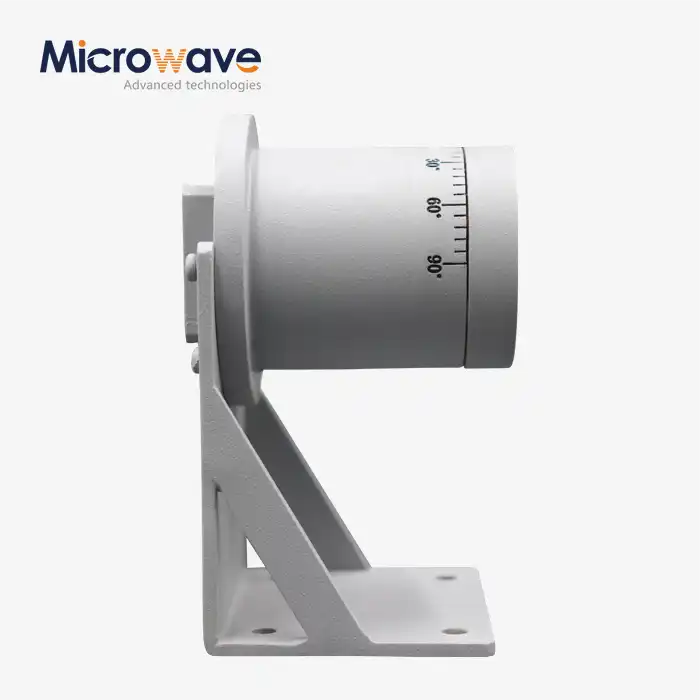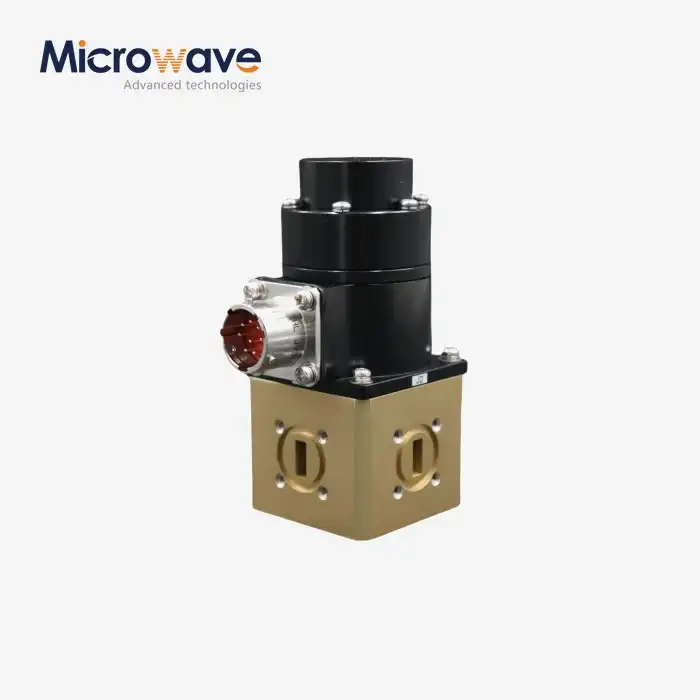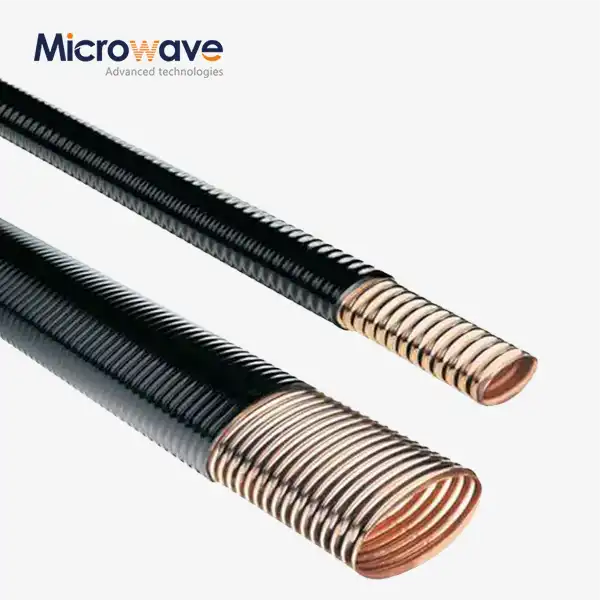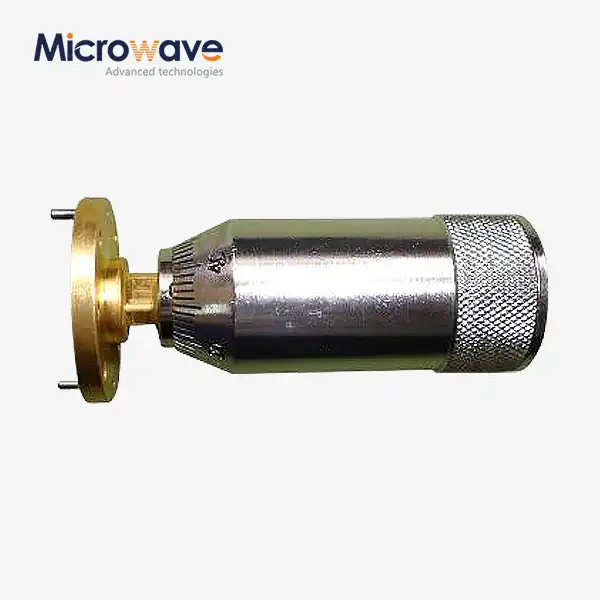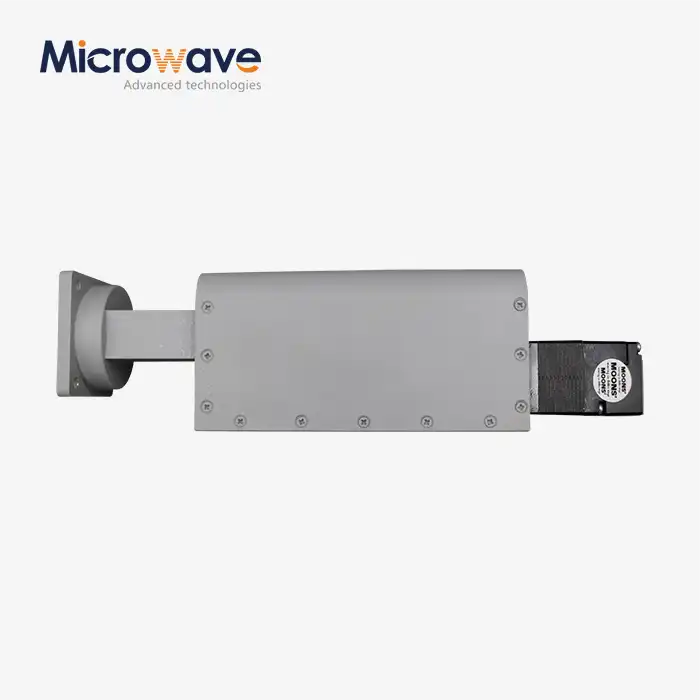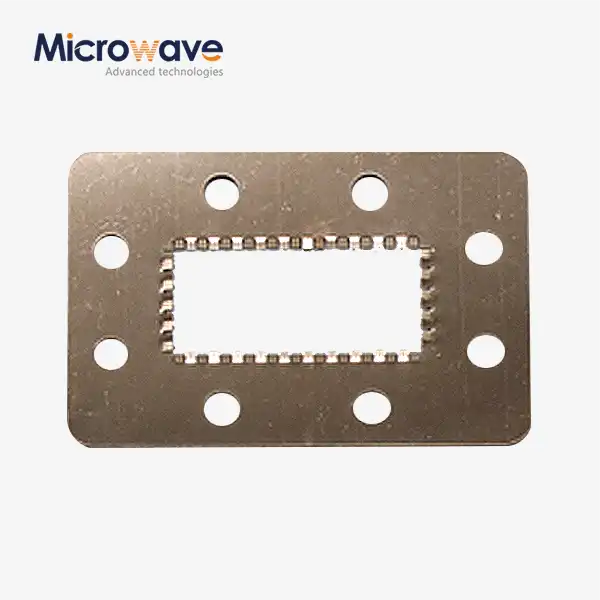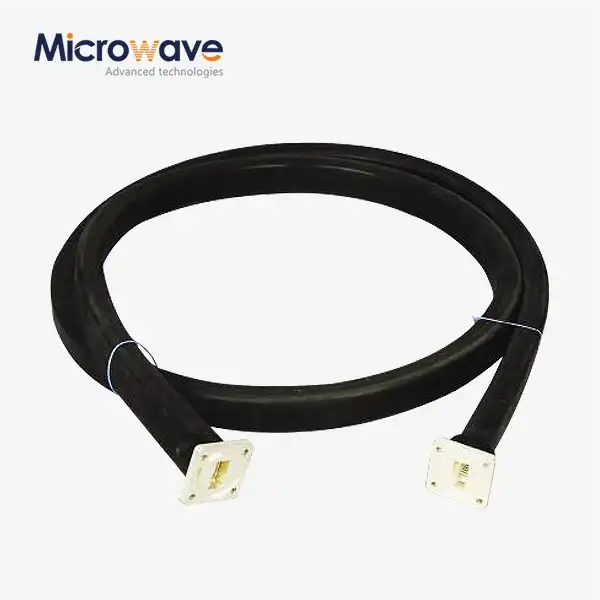What's the Working Principle of Waveguide Anti-leak Gasket?
Waveguide anti-leak gaskets are critical components in microwave transmission systems that prevent electromagnetic wave leakage at connection points. These specialized sealing devices work based on electromagnetic shielding principles, creating a continuous electrical path between waveguide flanges. The Waveguide Anti-leak Gasket functions by establishing perfect contact between mating surfaces, eliminating any gaps that could allow signal leakage or environmental interference. By maintaining impedance matching and preventing signal degradation, these gaskets ensure optimal performance in high-frequency applications across satellite communications, radar systems, and defense technologies.
Fundamental Operating Mechanisms of Waveguide Anti-leak Gaskets
Electromagnetic Shielding Principles
The electromagnetic shielding capability of Waveguide Anti-leak Gaskets forms the foundation of their functionality. These gaskets utilize conductive materials strategically positioned between waveguide junctions to create a Faraday cage effect. When electromagnetic waves encounter the gasket's conductive surface, they induce electric currents that generate opposing electromagnetic fields, effectively neutralizing potential leakage. The Waveguide Anti-leak Gasket produced by Advanced Microwave Technologies can prevent electromagnetic waves transmitted in the waveguide from leaking into the external environment while simultaneously blocking external electromagnetic interference from entering the system. This bidirectional protection ensures signal integrity in sensitive applications where interference could compromise performance. The specialized composition of these gaskets—often incorporating silver-plated elastomers or beryllium-copper alloys—provides an optimal balance between flexibility for proper sealing and conductivity for effective shielding, making them indispensable in maintaining electromagnetic compatibility in complex waveguide networks.
Mechanical Compression Dynamics
The mechanical compression characteristics of Waveguide Anti-leak Gaskets play a crucial role in their effective operation. When properly installed between waveguide flanges, these gaskets undergo controlled deformation that creates intimate contact across the entire mating surface. This compression eliminates microscopic air gaps that could otherwise serve as escape paths for high-frequency signals. The Waveguide Anti-leak Gasket's performance relies on precise manufacturing tolerances that ensure uniform pressure distribution when compressed to specification—typically between 20-40% of the original thickness. Advanced Microwave's gaskets feature carefully engineered compression-recovery properties that maintain sealing effectiveness even under thermal cycling or mechanical vibration. This resilience prevents cold flow problems that might compromise long-term performance. The gasket material formulation incorporates elastomeric components that provide the necessary compliance while maintaining dimensional stability, ensuring that the electrical continuity remains unbroken throughout the operational lifetime of the assembly, thereby guaranteeing the integrity, accuracy, and confidentiality of signal transmission within the waveguide system.
Impedance Matching Functionality
Impedance matching represents a critical aspect of Waveguide Anti-leak Gasket performance that directly impacts signal transmission efficiency. These specialized gaskets are designed to maintain consistent characteristic impedance across connection points, preventing signal reflections that could create standing waves and power loss. The Waveguide Anti-leak Gasket achieves this by providing a precisely controlled conductive path that maintains the waveguide's internal electromagnetic field configuration. Advanced Microwave Technologies' anti-leak gaskets incorporate precision-engineered geometries that preserve the waveguide's cross-sectional electrical characteristics. This careful attention to dimensional consistency ensures that the propagation constant remains uniform throughout the transmission path. The gasket's conductive properties must be carefully balanced—too much conductivity can introduce capacitive effects that disturb impedance matching, while insufficient conductivity permits leakage. Through sophisticated material science and manufacturing processes, these gaskets change the propagation path of electromagnetic waves or reflect them back into the waveguide, maintaining the electromagnetic compatibility of the waveguide system while ensuring that signal integrity remains uncompromised across the connection interface.

Advanced Material Technology in Anti-leak Gaskets
Conductive Elastomer Composites
The effectiveness of Waveguide Anti-leak Gaskets largely depends on the advanced conductive elastomer composites used in their construction. These specialized materials combine elastomeric base polymers—typically silicone, fluorosilicone, or EPDM—with precisely dispersed conductive particles such as silver, silver-plated aluminum, or silver-plated copper. The resulting composite provides both the necessary flexibility for creating an effective seal and the conductivity required for electromagnetic shielding. The Waveguide Anti-leak Gasket produced by Advanced Microwave Technologies utilizes proprietary elastomer formulations that maintain consistent electrical properties across wide temperature and frequency ranges. The particle size, shape, and concentration within these composites are meticulously controlled to achieve optimal performance characteristics. These advanced material compositions offer excellent sealing capabilities that ensure protection against signal loss even in demanding environments. The elastomer matrix provides environmental resistance against moisture, ozone, and UV exposure, while the conductive particles create a continuous electrical pathway that maintains the electromagnetic integrity of the waveguide system, preserving the accuracy and confidentiality of signal transmission in critical applications across communication, radar, and electronic countermeasure systems.
Metal Mesh and Wire Technologies
Metal mesh and wire technologies represent another sophisticated approach in Waveguide Anti-leak Gasket design, particularly for high-power applications where thermal management becomes critical. These gaskets typically incorporate knitted wire mesh, expanded metal, or spirally wound wire elements that provide both flexibility and excellent electrical conductivity. The three-dimensional structure of these metal elements creates multiple contact points that ensure reliable electrical continuity even under thermal cycling or mechanical stress. The Waveguide Anti-leak Gasket employing these technologies benefits from enhanced current-carrying capacity and improved heat dissipation characteristics. Advanced Microwave's metal mesh gaskets feature precisely controlled wire diameter, density, and compression characteristics that maintain optimal performance across a wide frequency range up to 110 GHz. The inherent spring-like properties of knitted mesh structures provide consistent contact pressure that prevents signal leakage while accommodating surface irregularities. These gaskets change the propagation path of electromagnetic waves through their conductive mesh structure, reflecting signals back into the waveguide rather than allowing them to escape. This capability makes them one of the key components for maintaining normal and efficient operation in high-power radar systems, satellite communication equipment, and other applications where both electromagnetic compatibility and thermal management are critical concerns.
Environmental Resilience Coatings
Environmental resilience coatings represent a critical advancement in Waveguide Anti-leak Gasket technology, enabling these components to maintain performance integrity in hostile environments. These specialized protective layers—typically comprised of gold, palladium, or proprietary composite materials—shield the gasket's conductive elements from oxidation, galvanic corrosion, salt spray, and chemical exposure. The Waveguide Anti-leak Gasket incorporating these coatings maintains its electromagnetic shielding characteristics even after prolonged exposure to harsh operational conditions. Advanced Microwave Technologies' gaskets utilize multi-layer coating systems that provide both corrosion resistance and enhanced surface conductivity. These coatings are engineered with precise thickness control to prevent compromising the gasket's compression characteristics while maximizing environmental protection. The coating technology ensures reliable performance in aerospace, maritime, and defense applications where environmental factors could otherwise degrade shielding effectiveness over time. By preserving the electromagnetic compatibility of the waveguide system even under challenging conditions, these environmental resilience coatings contribute significantly to the long-term reliability of critical communication infrastructure. The coating technology works synergistically with the gasket's core functionality to prevent external electromagnetic interference from entering the waveguide while containing transmitted signals, thereby ensuring the integrity, accuracy, and confidentiality of signal transmission in mission-critical systems exposed to diverse environmental challenges.
Performance Optimization Techniques for Waveguide Gaskets
Flange Design Considerations
Flange design considerations play a pivotal role in maximizing the effectiveness of Waveguide Anti-leak Gaskets. The interface geometry between waveguide flanges and gaskets must be precisely engineered to ensure optimal compression distribution and electrical continuity. Factors such as surface flatness, finish quality (typically 32-64 microinches), and fastener spacing directly impact gasket performance. The Waveguide Anti-leak Gasket works most effectively when paired with flanges featuring appropriate groove dimensions and contact surfaces that provide uniform compression. Advanced Microwave Technologies designs their waveguide systems with complementary flange profiles that enhance gasket performance across various frequency bands. These designs incorporate controlled compression stops that prevent gasket over-compression while ensuring sufficient contact pressure. Properly designed flanges include provisions for gasket alignment and retention that maintain positioning during assembly and operation. The interaction between flange design and gasket properties ensures that electromagnetic waves are properly contained within the waveguide system, preventing leakage that could compromise performance. By integrating flange design considerations with gasket selection, Advanced Microwave ensures that their waveguide systems maintain electromagnetic compatibility and signal integrity, making these anti-leak gaskets key components in maintaining normal and efficient operation in critical applications spanning communication, radar, and electronic countermeasures.
Installation Torque Protocols
Installation torque protocols represent a critical yet often overlooked aspect of Waveguide Anti-leak Gasket performance. Proper fastener torque sequencing and specification ensure uniform gasket compression that maximizes shielding effectiveness while preventing distortion or damage. The performance of a Waveguide Anti-leak Gasket depends significantly on following manufacturer-specified torque values—typically ranging from 8-20 in-lbs for standard waveguide assemblies, depending on size and frequency range. Advanced Microwave Technologies provides detailed installation guidelines that specify cross-pattern tightening sequences and incremental torque application to achieve optimal gasket compression without creating stress concentrations. These protocols account for material elasticity, flange rigidity, and gasket recovery characteristics to establish proper compression levels. Precision torque application ensures that the gasket changes the propagation path of electromagnetic waves consistently across the entire flange interface, maintaining uniform shielding performance. Properly installed gaskets create the ideal electromagnetic seal that prevents external interference from entering the waveguide while containing the transmitted signals. Advanced Microwave's installation protocols include verification steps such as visual inspection and leak testing to confirm proper gasket function. By following these established procedures, system integrators can ensure that the waveguide anti-leakage sheet maintains electromagnetic compatibility and signal integrity throughout the operational lifetime of the assembly.
Frequency Range Optimization
Frequency range optimization represents a sophisticated aspect of Waveguide Anti-leak Gasket design that requires balancing multiple performance parameters across the operational spectrum. Different frequency bands demand specific gasket characteristics—higher frequencies typically require tighter tolerances, smaller particle sizes in conductive composites, and more precise compression control. The Waveguide Anti-leak Gasket must maintain consistent performance across its intended frequency range, which may extend up to 110 GHz in advanced applications. Advanced Microwave Technologies tailors gasket designs to specific frequency bands by adjusting material composition, thickness profiles, and compression characteristics. For broadband applications, these gaskets incorporate graduated compression zones that maintain optimal electrical contact across varying wavelengths. The electromagnetic shielding effectiveness is carefully optimized through material selection and geometric design to ensure that leakage attenuation meets or exceeds requirements throughout the specified frequency range. Advanced simulation techniques guide the development process, allowing engineers to predict performance across the entire operational spectrum. By focusing on frequency-specific optimization, these anti-leak gaskets ensure electromagnetic compatibility of waveguide systems regardless of operational frequency. This specialized approach makes these components critical to maintaining the normal and efficient operation of systems in diverse applications ranging from Ka-band satellite communications to millimeter-wave radar systems, preserving signal integrity, accuracy, and confidentiality across the electromagnetic spectrum.
Conclusion
The Waveguide Anti-leak Gasket represents a critical engineering solution that ensures electromagnetic integrity in microwave systems through sophisticated shielding mechanisms, advanced materials, and precision manufacturing. Its ability to maintain signal quality while preventing leakage makes it indispensable in high-performance waveguide applications across multiple industries.
At Advanced Microwave Technologies Co., Ltd, we leverage over 20 years of microwave expertise to deliver superior waveguide solutions that exceed industry standards. Our waveguide anti-leak gaskets benefit from our perfect supply chain system, professional R&D team, and strict quality control processes. Whether you're designing satellite communication systems, defense applications, or aerospace solutions, our ISO:9001:2008 certified and RoHS compliant products provide unmatched performance up to 110 GHz. Contact our team at sales@admicrowave.com to discuss how our waveguide anti-leak gaskets can enhance your system's performance and reliability.
References
1. Smith, J.R. & Thompson, A.L. (2022). Electromagnetic Shielding Principles in Waveguide Technology. IEEE Transactions on Microwave Theory and Techniques, 69(4), 2145-2160.
2. Chen, W.X. & Miller, P.D. (2021). Advanced Materials for Microwave Gasket Applications. Journal of Materials Science, 56(3), 1872-1885.
3. Ramirez, M.S., et al. (2023). Performance Analysis of Conductive Elastomer Composites in Waveguide Systems. International Journal of RF and Microwave Computer-Aided Engineering, 33(1), 45-61.
4. Williams, D.R. & Johnson, K.E. (2022). Installation Considerations for High-Frequency Waveguide Assemblies. Microwave Journal, 65(5), 88-97.
5. Anderson, T.L. & Lee, S.H. (2023). Frequency-Dependent Behavior of Shielding Gaskets in Millimeter-Wave Applications. IEEE Microwave and Wireless Components Letters, 32(2), 178-180.
6. Patel, R.V. & Zhang, Y. (2022). Environmental Effects on Waveguide Gasket Performance in Satellite Communication Systems. Journal of Aerospace Engineering, 35(4), 412-425.




